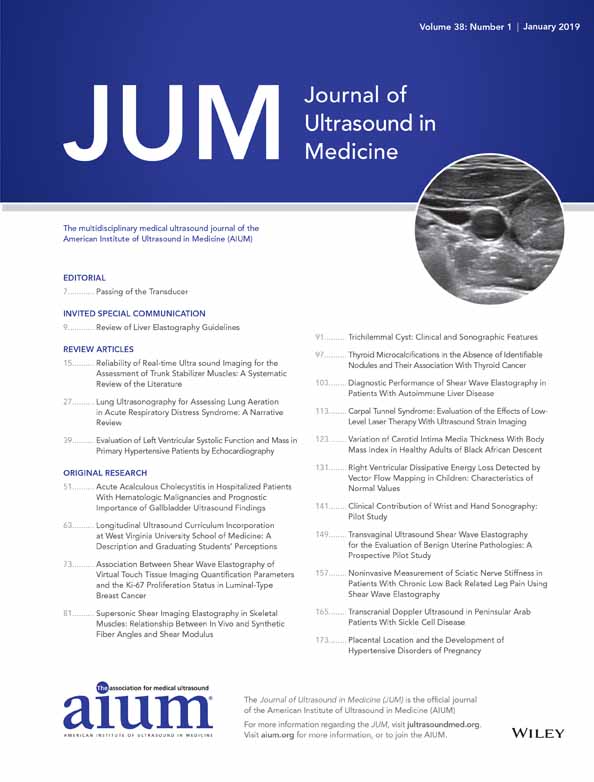Carpal Tunnel Syndrome: Evaluation of the Effects of Low-Level Laser Therapy With Ultrasound Strain Imaging
Abstract
Objectives
To evaluate the efficacy of low-level laser therapy on median nerve stiffness by using strain elastography in carpal tunnel syndrome (CTS).
Methods
This study included 37 wrists of 34 patients with mild or moderate CTS between January 2016 and August 2016. The control group comprised 17 patients (18 wrists) with CTS who were treated with wrist splinting for 3 weeks. The low-level laser therapy group included 17 patients (19 wrists) with CTS who were treated with a combination of splinting and low-level laser therapy, which was applied 5 times per week for 3 weeks. Clinical assessment scales, including the Symptom Severity Scale (SSS) and Functional Status Score (FSS), were obtained from our database. The cross-sectional area by ultrasound and strain ratio by elastography were studied. The differences in the strain ratio, cross-sectional area, SSS, and FSS between pretreatment and posttreatment periods in the groups were compared by the paired-sample t test. The correlations between changes in the strain ratio and the cross-sectional area, SSS, and FSS were analyzed by Pearson correlation coefficients.
Results
The control group included 13 women and 4 men, and the therapy group included 14 women and 3 men. In the therapy group, the mean values of the strain ratio, cross-sectional area, SSS, and FSS decreased significantly after laser therapy (P < .001) in contrast to the control group. No significant correlation was observed between the decreasing degree of the strain ratio and the cross-sectional area, SSS, and FSS after laser therapy.
Conclusions
The strain ratio and cross-sectional area of the median nerve decrease after low-level laser therapy. These changes may be related to the therapeutic effects of low-level laser therapy, such as nerve regeneration and improvement of the vascular supply.




